![[Quick Reference Dictionary of Art]](booksml.gif)
QRDA
DISCUSSION # 2:
Natural Facilities continuedSEEING
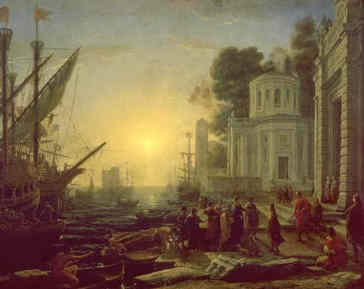
NOTE: Claude Lorraine was a seascape artist. He was a master of perspective and light and water effects. No painting before this one, ever included the actual source of light within the scene.
Light waves (FYI 16), either from a direct source or reflections from an illuminated object, enter the eye. The image of the seen object is projected onto the retina of the eye upside down. The retina is a collection of nerve cells, which are essentially an extension of the brain. These cells are photo sensitive. They measure the intensity and assess the nature of the light being received. This visual information is then sent to the visual cortex of the brain via the optic nerve. Here the image data is up-righted and further analyzed as to, location of object, orientation of its edges, movement, size, color, etc. As fantastic as it is, this process is not as fool proof as one might think.
Why is that?SEEING IS BELIEVING?
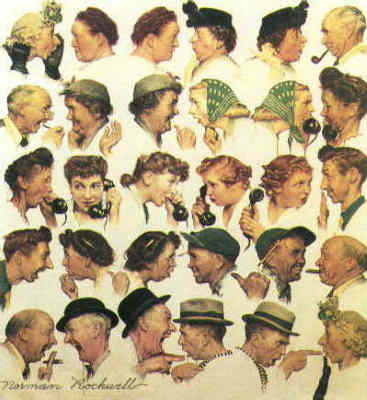
"SATURDAY EVENING POST COVER" by NORMAN ROCKWELL
THE VISUAL PROCESS (IN WORK)
VIEWING HABITS
Survival for our ancient ancestors was very often a moment to moment proposition. Possible threats to life and limb lurked around every corner. Even food gathering could be a perilous undertaking. Survival often depended on quick responses and constant alertness...constant vigil. Eyes scanned the horizon in broad quick sweeping motions searching for indications of danger. Detailed observation was not the order of the day in this era. We learned our lessons well. Thousands of years later our viewing habits, for all practical purposes, remain basically unchanged. We still view things in broad sweeps. For the most part, we still perceive things in generic visual terms.
GENERALIZED OPTICAL FUNCTION
VISUAL MEMORY and RECALL
By the same token, the more visual information one collects, the greater the risk of visual mix-ups and confusion. Therefore, visual information must not only be gathered, stored and recalled, but it must be accurately gathered... accurately stored...and accurately recalled. This requires mental organization.
NOTE: Leonardo Da Vinci was such a keen observer and possessed such good visual recall, he could accurately draw a horse in any position from memory. Try that without the aid of a camera!
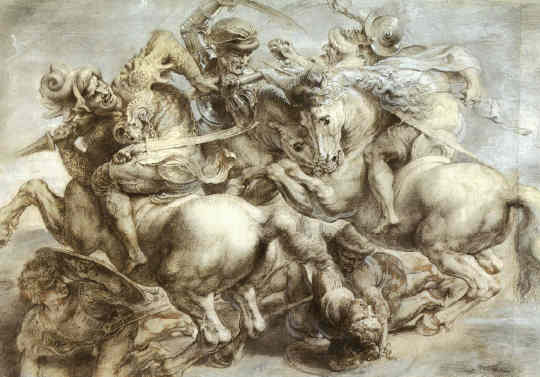
"RAGING BATTLE" by LEONARDO DA VINCI
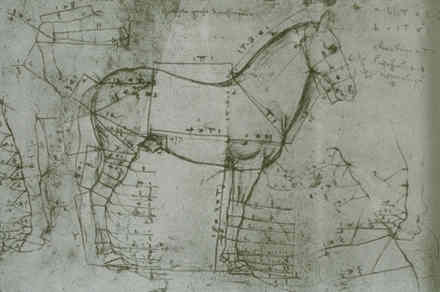
STUDY OF A HORSE by LEONARDO DA VINCI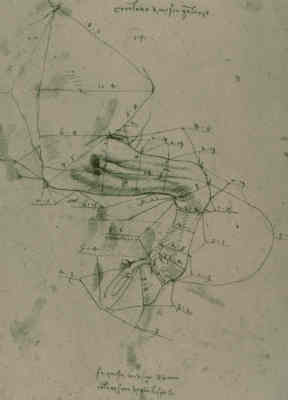
STUDY OF A HORSE LEG by LEONARDO DA VINCI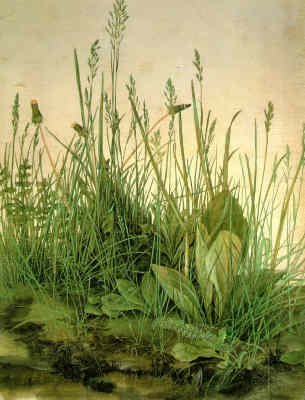
LARGE PIECE OF TURF by ALBRECHT DURER
NOTE: Durer’s nature studies (such as the one above) are so accurately drawn, botanist today can positively identify each plant.
The artist must learn to utilize the logic function of his left sphere to help organize the visual function of his right sphere. When these two spheres are truly functioning together, one’s visual perception, memory and recall become more efficient…more effective.